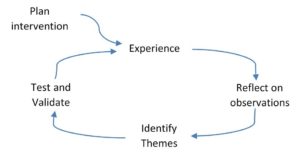In our oil and gas industry, we have many arrangements in place to assure, audit, learn lessons etc. and continuously improve our operations. Many of these arrangements are driven by regulation or to meet Company standards, as well as improve operational and HSE performance. Unplanned events do occur and we investigate to ensure ‘lessons are learned’. But how effective are all these activities as a means of organisational learning and what more can be done to make sustainable improvements to control risk in our hazardous operations?
Three perspectives which I think offer some insight are;
- What do we say we do through our processes and procedures
- What do we actually do in practice
- What more can be done to improve organisational learning
Taking the first, as an industry we create many procedures, standards, policies, processes, swimlanes, excel registers, databases etc. Each time a new requirement emerges, an incident occurs, or new assets are added, we add to the already burgeoning collection of management system documents. At some point, we all end up moving to a ‘de-cluttering’ exercise!
These are essential tools to manage our business. However, when we undertake creating these documents, how much time and effort do we put in to understanding the perspectives of the end user, the usability of the document, the logical soundness of the processes, the clarity and style of language, and making effective use of graphics and icons. My experience shows a mixed bag; there are some excellent examples out there, matched by procedures that are well in excess of 150 pages, or with flowcharts so complex, you need an algorithm to work out all the possible combinations!
However well or otherwise we capture ‘what we say we do’, what actually happens in practice? Given that the stated purpose of any procedure is well intended, the expectation must be that well intended actions follow. Given any improvement to a procedure or process, equally we should expect improved performance. And given that we audit, verify and assure these processes to check they are effective, we should, after identifying gaps to close, have effective processes that work in practice.
But there are many situations where a gap persists between procedures and practice. Following an incident, how often do we see the root cause of ‘procedure not followed. Or, during an audit, in answer to the question ‘are you aware of this procedure’, the answer is often in the negative.
Whether the activity is proactive assurance, or investigation, the findings from these must be the kernel to organisational learning and improvement. This raises two other questions – are the findings robust, and how well are these findings implemented?
Too often, findings and recommendations are ambiguous, open ended, or confusing. Increased rigour, competence and governance to create targeted, value adding SMART actions is essential.
When actions are entered into the organisation’s action-tracking system, is there clear accountability through the life of these actions, all the way through to checking if the action has actually made a difference? Is the learning loop being closed?
When organisations adopt ISO standards, they are couched in PDCA models, ‘non-conformances’, and other such quality oriented terms. This can add to the theory-practice gap because the language of Quality is often incongruent with day to day oil and gas operations. This does not make for an effective ‘learning system’.
What more can be done to strengthen the organisation’s learning effectiveness? Perhaps a first step is to look at what the learning process is. Deming’s PDCA continuous improvement cycle has been in use over a long period, driven from a manufacturing viewpoint where we;
- Plan a better way of improving a product (or process)
- Implement (Do) the improvement
- Check if the improvement has worked (Deming called this a Study step)
- Take further Act(ion) to improve again, and so on in a cycle
An alternative model is offered, where we;
- Engage with end users and observe behaviours in practice, compare these experiences to the expectations defined in company processes.
- Reflect on what is driving any differences in practice, what are the underlying themes from a cross section of perspectives, what are the soft issues, are there any feedback loops setting up certain types of behaviour?
- Form a clear view on what the essential themes (or models) are that drive practice and what improvement actions might make a difference. Check any assumptions being made.
- Validate these key improvement actions with those who will be affected, test how they will add value, and implement through a robust change management process, and we return then to the first step.
This learning process (introduced by Kolb, 1984), takes account of people, their unique perspectives, and the importance of taking time to reflect and identify underlying themes.
How does this translate into our fast-moving dynamic, complex and unpredictable energy industry? This suggested approach, a systems approach, is not complex or time-consuming. It is necessary however to think and plan a little differently. Rather than only getting involved at low levels of detail and looking at component level, also stand back and observe the wider behaviours in the workplace. Rather than think of events in isolation, look at the feedback loops and other inter-relationships which have caused the event. Rather than assume people will comply with a process, engage with the key users, go to their operating space and really understand their perspective. Get them involved in shaping business processes.
Organisational Learning using a Systems Approach such as this is expertly introduced in Peter Senge’s ‘The Fifth Discipline”. A recommended read for an introduction to systems thinking in organisations.
With this approach, more effective interventions are possible, personal ownership for improvement will be more likely, and in the long term, more effective organisational learning, and a safer and more efficient operation!
